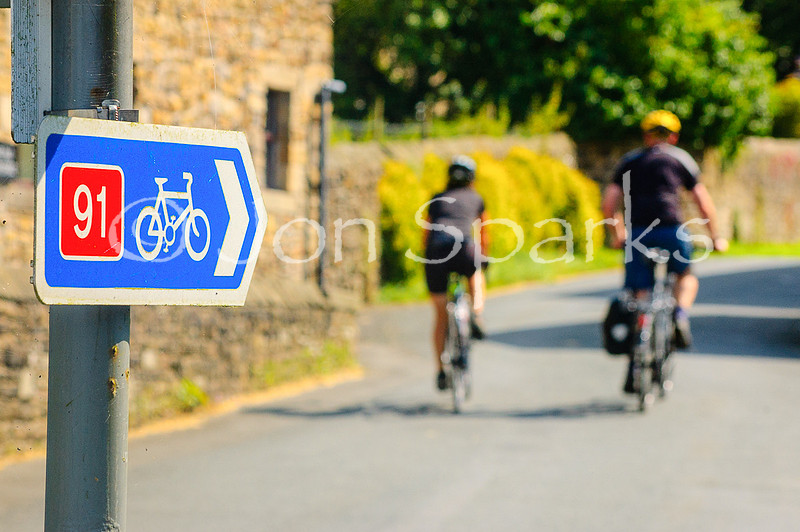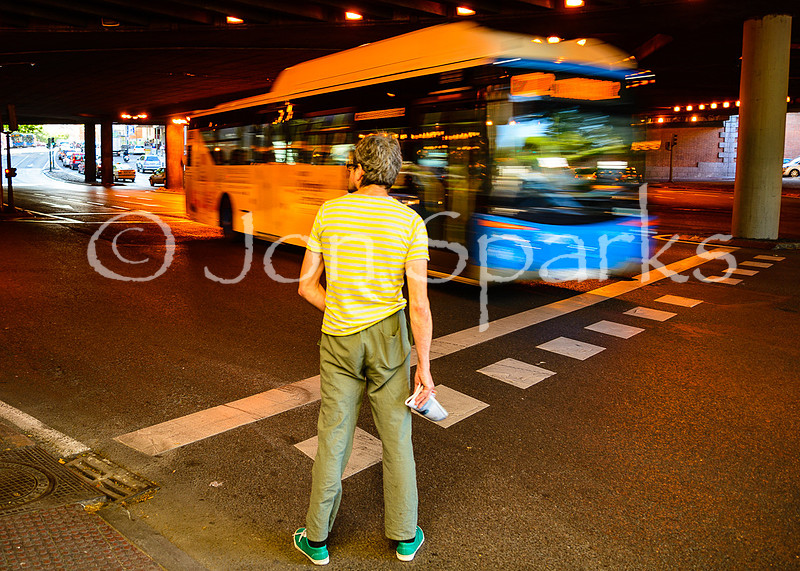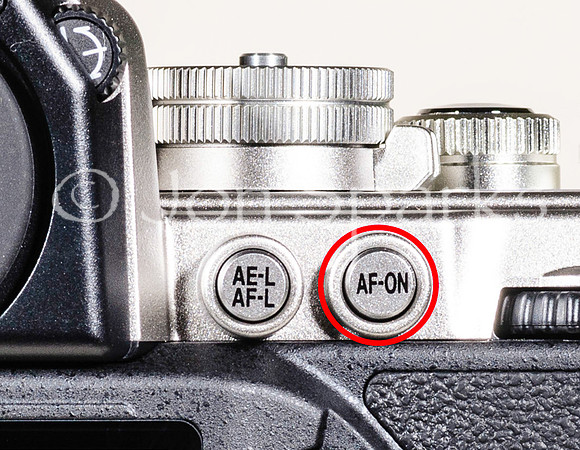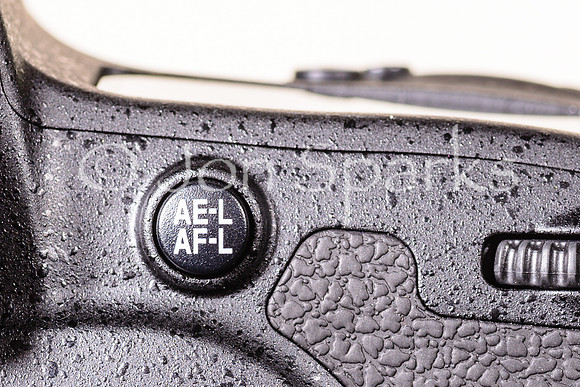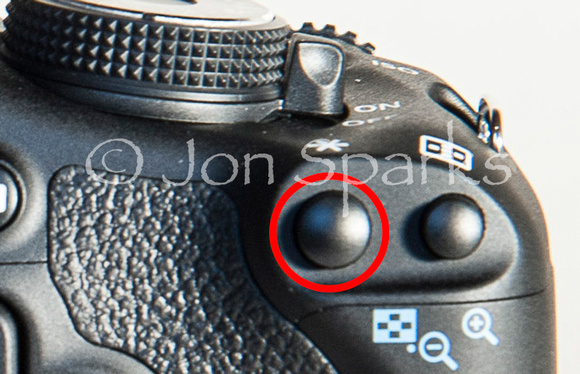Better Focus Control with Back-button AFHow do you focus? To ask the question more precisely, how do you tell the camera when to focus? Or, in even simpler terms, which button do you use? I’m sure many people never really think about this. The camera focuses automatically and that’s enough. However, as enthusiasts know, sometimes you want to focus on a subject and then just stay focused on that point. You may even want to focus on a subject and then hold focus while you reframe the image with that subject near the edge of the frame (i.e. outside the area covered by the focus points) – this is called focus lock.
Off centre-subject At other times you want the camera to keep adjusting focus because you’re dealing with a moving subject; whether it’s moving across the frame, directly towards (or away from) you, or following some more complex trajectory, you want the camera to keep track of it and maintain focus on your chosen subject. Single and ContinuousMore sophisticated cameras, including DSLRs and the majority of mirrorless cameras, allow you to switch between single-shot and continuous autofocus modes. Single-shot modes work for static subjects – our first scenarios, a couple of paragraphs back. After all, if neither the subject nor the camera move, you only need to focus once. Continuous modes allow the camera to keep adjusting focus to deal with moving subjects. Nikon (whose cameras I know best) badges these modes AF-S and SF-C respectively. That’s understandable; it probably becomes less clear when you see that the official full names of these modes are Single-servo AF and Continuous-servo AF. Hands up if ‘servo’ means anything at all to you... Other camera-makers may use different jargon, but the basic single/continuous distinction still applies. For example, Canon’s equivalents (in most cameras, anyway) are One Shot AF, which is clear enough, and AI Servo AF, which is arguably even more obscure than Nikon’s terminology. There’s also an auto option (AF-A, or AI-Focus in Canonspeak), in which the camera decides whether AF-S or AF-C should be employed. If it detects a moving subject it will use continuous AF to track it. However, I’m sure we can all imagine scenarios where there’s movement in the scene but the actual subject we want to capture is stationary. Or we may simply want to make our own decisions about when to use AF-S or AF-C.
‘There’s movement in the scene but the actual subject we want to capture is stationary.’ Normally, you switch between AF-S and AF-C using a separate control. On recent Nikon DSLRs, for instance, you hold the centre of the focus selector switch and turn the command dial (main command dial on cameras with two dials). It’s simpler than it sounds, but it takes practise to be able to do this without taking the camera from your eye, and it isn’t instant. What if there was a way to switch from single to continuous AF at any time, with no delay, and without looking at any of the controls? Well, there is, and it’s called back-button AF. Some cameras have a dedicated button on the rear which you can use for this. On Nikons it’s labelled AF-ON, but it’s only found on high-end models like the Df, D810 and D4s.
Separate AF-ON button on a Nikon Df However, if like me you use something a bit more ordinary, do not despair. Almost every other Nikon DSLR has a button which you can set up to do the same job. It’s marked AE-L/AF-L. By default, if you hold down this button, both exposure and focus are locked, but you can change its function with a visit to the Custom Setting Menu. The only exceptions are the D3300 and its predecessors, which don’t have a Custom Setting Menu.
AE-L/AF-L button on a Nikon D750
Equivalent to the AE-L/AF-L button, marked with a star, on a Canon EOS 600D With other models, you need to find the menu item called Assign AE-L/AF-L button, and change the setting there to AF-ON. Having done this, the other step you need to take is to make sure that autofocus is set to Continuous (AF-C). Do this once, and you’ll never need to change the AF mode again, because you’ll be able to shift between AF-S and AF-C at will. Black magic?This might sound like black magic, but it isn’t. Changing the function of the AE-L/AF-L button to AF-ON also stops the shutter-release button from activating autofocus. Now, only the AE-L/AF-L button can do this. And, because it has no other function, there’s no confusion. If you press it and then release when the camera focuses, focus then remains set at that distance – it functions as Single-servo AF and focus lock rolled into one. Press the button and keep it pressed, on the other hand, and Continuous AF remains active. If you have a camera with an AF-ON button, you do have to ‘turn off’ the autofocus function of the shutter-release button; do this by changing the AF activation item in the Custom Setting Menu from Shutter/AF-ON to AF-ON only. Having done this, the AF-ON button then functions in the same way described for the AE-L/AF-L button in the previous paragraph. No doubt this all sounds complicated. It did to me when I first started experimenting with back-button AF. But once I’d got used to using my right thumb to activate focus rather than my index finger, I soon realised things had actually become simpler. Not only can you switch between single and continuous AF at any instant, you also have no more worries about whether pressing the shutter-release button will cause the camera to refocus if you don’t want it to. It took me a few hours to get used to it but soon it became second nature and now I wouldn’t have it any other way. I now set up this option on any camera that I’m using. Try it – give it a fair chance and you may find you never go back. Mind you, it’s not entirely without pitfalls. It caused a little confusion last week when I lent my D600 to another photographer and next day he emailed to ask if knew that autofocus wasn’t working? I’d forgotten to tell him that pressing the shutter-release button wouldn’t actuate AF. Fortunately, that was quickly resolved. It’s something to remember if you share the camera with someone else – though that could be what User Settings are for. But that’s another story...
Back-button AF lets you jump from Single to Continuous AF instantly
Keywords:
advice,
AF,
autofocus,
Back-button,
camera,
Canon,
digital,
discussion,
focus,
Nikon,
photography,
technique
Comments
Great post! I never fully understood back-button focus until now. Your explanation made it super clear, especially how it helps switch between single and continuous AF. I’ll definitely try this on my DSLR—sounds like a real game-changer for more control. Thanks for sharing such helpful tips!
No comments posted.
Loading...
|


